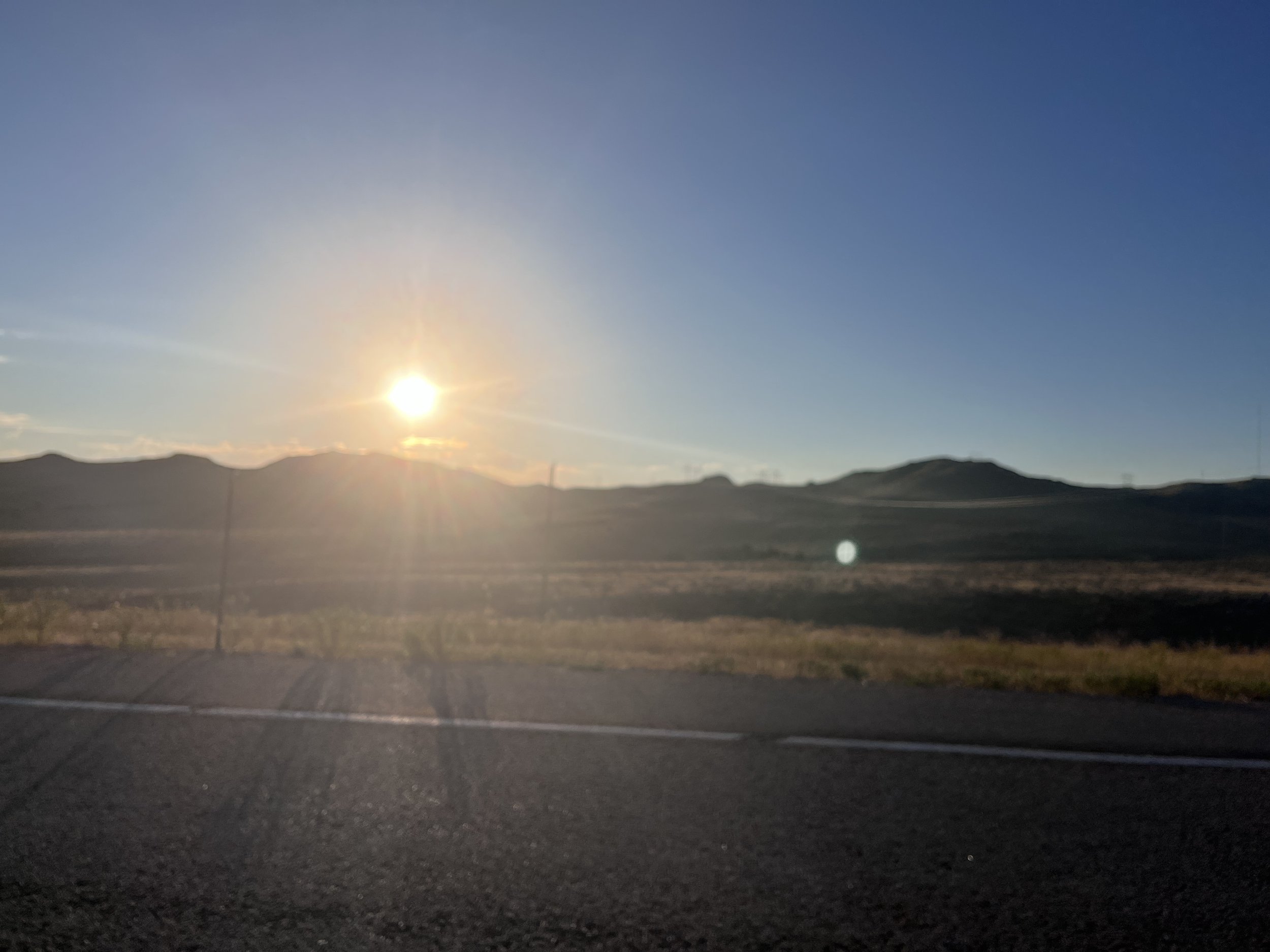One Size Does Not Fit All: Adaptive Grazing
A Diverse Family of Partners
Ranching is still a family business. Across ranching families, a multitude of philosophies on how to best graze grass and rangelands exist and are almost as varied as the landscape. At Kateri, the families we talk with all run different types of grazing operations. Some are cow calf operators with near permanent cattle on the property. Some move through immense federal and state leases with big herds, and others bring in stockers for short duration seasonal grazing. Though most of our partners are cattle operators, some even come to the table with exotic species, such as emus. Universal among them, however, is a budding awareness that producing great forage is their business, and an intuition that adaptive management is the key to getting there.
These practitioners know that each year presents new, unique grazing conditions, & working to take just the right amount of grass from each pasture over time requires awareness, patience, and good information. They can respond to the challenge with deliberate stocking and animal movement choices. However, traditionally, grazing - especially where it is continuous and mismanaged - has historically done damage to large parts of grass and range lands across the country.
Challenges of Traditional Grazing
In more than a few geographies, the legacy of ranching has been one of too much or not enough grazing. Fences are too expensive and inflexible, water distribution insufficient, or labor unavailable to move animals & adapt grazing to the landscape. The application of adaptive grazing practices is constrained, and too many pastures remain degraded. In these situations, producers can’t run the numbers that they would like or can’t handle the numbers they have to make a good living.
This pattern can lead to economic strain, and to break it, many ranchers feel that they don’t have the resources they need. It can be especially hard when part of the answer is to do more with less. Indeed, on a substantial portion of grazed lands introducing more rest and recovery periods could help build carbon stock and restore soil health. On other areas, more grazing could help local, perennial grasses take root more firmly.
It all depends on the current state of the land and the local climate conditions that are present. Either way, over or under stocking creates a lack of profitability & sets the stage for why a shift in grazing strategies towards adaptive formats is crucial for profitable ranching. Though all producers walk a fine line, many agree on one thing: there is room for improved margins and adaptive grazing will help them get there.
Adaptive Grazing Helps Producers Achieve Profitability
Adaptive grazing is not really a new thing, but today, it is underutilized due to some of the aforementioned constraints. A chorus of practitioners has articulated and is developing plans to implement adaptive grazing around the country. Their advice is timely, because adaptive grazing has numerous economic upsides and presents producers with a chance to have greater autonomy in their operations. Some of the benefits include:
Reduced supplemental feed inputs
Boosted forage productivity
Overall improved forage quality and quantity
Diversified revenue streams from carbon
New, premium markets for sustainable protein
Indeed, many of our partners already have been developing novel understandings of the relationship between their grassland’s health and their businesses' success. Their work can be augmented by our algorithms, soil and forage quality data, and ranch advisors, but never replicated or replaced.
Environmental Restoration through Grazing
Profitability isn’t the only dimension impacted by adaptive grazing. Other operating fundamentals; soil health, biodiversity, and landscape scale aesthetics and functional outcomes are also at stake. Properly managed grazing rotations and rest can equate to less compaction, more forage growth, and higher soil health than continuous grazing. These changes bring back soil carbon, too, which acts as a natural sponge: holding nutrients and water in place. Well designed adaptive grazing outcomes can include:
Increased microbial activity
Improved water absorption and retention
Implementing Managed Adaptive Grazing
Kateri takes several steps to help further adaptive grazing for our partners. We visit with producers, understand their operational profile and interests, and then undertake a preliminary land assessment to check out their carbon stock potential. We try to understand how each grazing operation and the land interface with a resource inventory. Then, we hire expert consultants to join us as partners in ranch planning to build an adaptive grazing roadmap for the future. We’ll co-develop grazing plans, arrange for cost share in hardware and infrastructure, and work to support each property reaching its full grazing potential.
We consider paddock design, stocking rates, and operational needs when planning how to monitor and adapt each roadmap, always allowing producers the flexibility they need to meet changing conditions in real time. Notably, since soil water is the most limiting plant growth factor on rangelands, we try to focus on how grazing can have meaningful impacts on how adept grasslands are at holding moisture. We have seen how adaptive management influences the effectiveness of precipitation uptake and soil moisture.
Where there is protection for the soil with healthy forage, microbial activity that stimulates plant nutrient uptake and growth can function more effectively when combined with healthy grazing pressure. Grazing in the right place, and at the right time helps ensure fuel flows from plant to animal and back to the soil in a symbiotic loop. There may also be substantial benefits to animal health as graziers avoid crowded, muddy conditions that may contribute to disease while accessing more and more varied nutrients from grasses in the rotation. The goal of a well adapted system is to deal with the variety each year brings and find this balance where the reciprocity between grazing, grass, and soil is properly recognized and managed against.
Kateri’s supports adaptive grazing with tools and financing that help producers to observe, collaborate, and adapt.
Leveraging Tools, Technologies, and Incentives
Adapting grazing, through once an ancient pastoral practice, has seen several game changing technologies impact its’ scope in modern times. The ultra-mechanization of agriculture and reduced emphasis on rural communities' unique interaction with the landscape in favor of high productivity, specialized crop and animal protein production may have contributed to reductions in adaptive grazing ideologies over the last 100 years. Today, awareness is back and practice will follow. Technology, as ever, is helping drive change.
Initially, the advent of flexible, low cost, and portable polywire was a major contributor to a new found interest and ability to manage cattle adaptively to the landscape. Today, a new class of fencing, virtual, is sodding new ground in terms of what is possible with grazing management. Learn more about virtual fencing here on the Kateri Blog, or merely understand that animals wearing virtual fencing hardware can be moved amongst digitally drawn, flexible boundaries, a boon for operational considerations especially on rough terrain or where labor is scarce. Other technology, like 701x, HerdX, as well as Moovement collars can help cattlemen flexibly locate and manage their animals, too, albeit with the lingering need for physical fenceline.
Another major component of successful rotational grazing we hear from our partners is providing water access at diverse points to enable graziers to make use of the full landscape. One vendor, Ranchbot, has automated water monitoring and control systems that may be used on their own to influence livestock movement and grazing duration. Many of our partners start the journey towards adaptive grazing with plans to build more water infrastructure - and sometimes NRCS or other grant infusions can help get water flowing to the back of the pasture.
The Big Picture
Adaptive grazing recognizes the full potential of grass and rangeland. It’s one of of the few cost effective ways to restore degraded landscapes - some of which have resulted from poor grazing practices or undergrazing - and newly embraced by practical operators across the country. Technology, community, and market incentives are converging to broaden the applicability of operating under an adaptive grazing regime. Kateri is a trusted partner that has already helped ranching families across the country turn on adaptive grazing and is thrilled to continue to push this capability and the resulting outcomes to each pasture we can reach. Connect with Kateri today to learn more.



